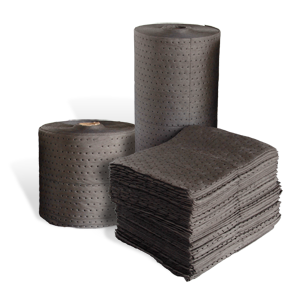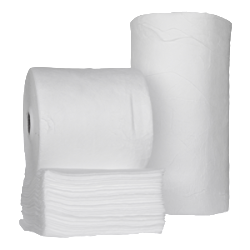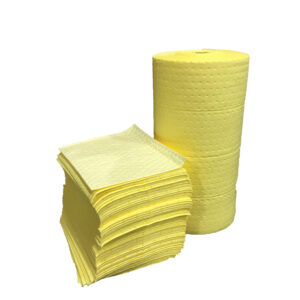Choosing the right industrial absorbents
Use our easy-to-use industrial Sorbent Selection Guide to help choose the right absorbent for your specific application.
1. Determine the type of liquids to be absorbed.
• Oils, coolants, solvents and water (gray universal)
• Oil, turpentine, oil based liquids (white or blue oil only)
• Aggressive chemicals, acids, bases, and unknown liquids (yellow or green hazmat)
2. Identify your absorbent application.
• Wiping, dripping or foot traffic areas (pads, rolls, socks, and pillows)
• Barrier-backed or heavy traffic areas (mats and rugs)
• Emergency spill response (spill containment and spill kits)
3. Determine the amount of liquid to be absorbed.
• Small (lightweight)
• Medium (middleweight)
• Large (heavyweight)


Universal Indoor Industrial Absorbents
Use all-purpose absorbents to cleanup oils, coolants, solvents and water-based fluids anywhere in your facility. Use gray industrial absorbents around machinery, under leaky pipes or fittings, in messy traffic areas, for general maintenance projects–they are your first choice for indoor spill control. Plus, their gray color masks spills and stains, helping you resist the urge to pick up the absorbent before it is fully saturated.
- Gray universal sorbents absorb coolants, solvents, oils, gasoline, vegetable oil, kerosene, latex paint, and other water-based fluids.

Oil-Only Indoor / Outdoor Sorbents
These absorbents are specialized for oil and other petroleum-based spills, including paints and other non-water soluble chemicals. These absorbents will not absorb water and will float indefinitely.
- White and blue oil only sorbents absorb hydraulic oil, motor oil, brake fluid, cooking oil, turpentine and other oil-based fluids.

Industrial Chemical Absorbents
Surfactant-treated polypropylene absorbents can be used on a wide range of chemicals, including hydrofluoric acid, and are chemically inert, so they will not react with aggressive fluids.
- Green or yellow hazmat sorbents absorb aggressive chemicals, citric
acid, sodium hydroxide and other unknown chemicals.